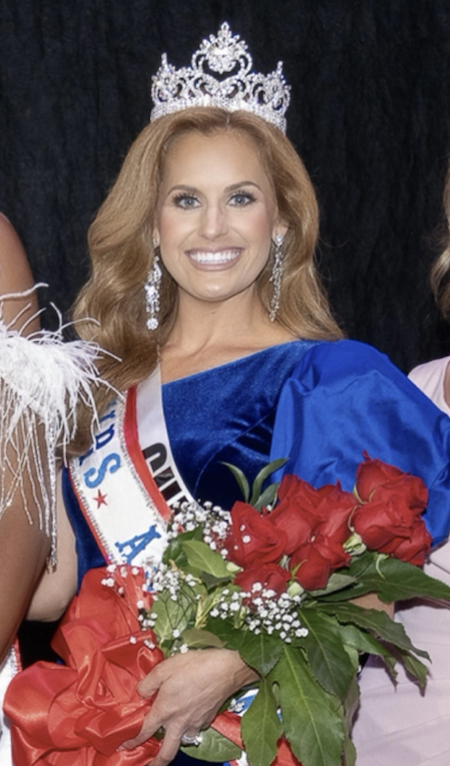Winterize… your hair? Protect your style from a seasonal slump
Published 4:57 pm Friday, November 8, 2013
Your hair is golden waves of agreement when the weather’s balmy, but once the cold, dry air starts blowing and the static electricity is flowing, your hair nightmare can turn into reality. Miranda Edwards-Sargent, stylist at Rootz Salon in Sophia, W. Va., says just because the weather outside is frightful, it doesn’t mean your hair has to be. Sargent shares her secrets here to staying stylish in spite of the forecast.
1. Lay off the glycerin: While it has a reputation that makes it a staple in smoothing and de-frizzing products, glycerin can actually be detrimental to hair in colder weather. Glycerin works by pulling moisture from the air into your hair. Unfortunately, it can have the opposite effect in cold weather, pulling moisture from your hair instead. If you do use it, make sure to use it with water or in water-based products only.
2. Love ’em and leave-in: After leaving your glycerin-based products behind, replace your moisture source by doubling up on leave-in conditioner. Try softer or lighter hold gels in the fall and winter months rather than maximum hold products that will leave your hair feeling crispy. Since there’s no need for a thick application of gel to fight humidity, apply lightly and add more only as needed.
3. Beat the artificial heat: Cold, dry air, static electricity, and everyday use of heat styling tools can quickly render your ends brittle and frayed. Save your strands by shampooing less often (maybe every other day unless your hair is oily by nature), giving your hair much-needed rest and time to absorb its natural oils.
4. Go protein free: Our diets need helpings of protein, but our hair should pass on it. Products containing proteins can protect damaged hair, but they can also cause build-up and may make hair dull and brittle. Avoid these or use less during harsher weather months.
5. Use more conditioner in the shower: Hair strands are semi-permeable, so when there’s moisture in the air, it wants to move into the strand to balance things out. As the moisture pushes in, it causes the hair cuticle to expand, and you get frizz. To prevent this from happening, hydrate your hair from the inside, out — in the shower. (If you wait until after you style to coat strands with an anti-frizz spray or serum, it’s already too late.)
Get into the routine of using extra conditioner to counteract damaging cold weather. Not only should you condition more often, but if your hair is dry and thick enough, you may want to skip shampoo altogether for at least one weekly “washing.”
6. Seal it with oil: Coat hair with a light layer of oil to seal and protect it from the elements. Products with jojoba and almond oils will add shine; coconut oil and shea butter are perfect for coarser hair types.
7. Treat your hair: Cooler months provide the perfect time to use intense, reparative masks. Apply a generous layer of a deep conditioner on dry hair, and leave it on for at least 20 minutes to fully absorb, or sleep with it in for best results.
Here are some more weather-related hairy situations, and how to combat them:
Culprit: Dry Air
Condition: Static
Your defense: Common dryer sheet
Cold air is denser than warm air, which means there’s less room for water vapor, which means it’s drier. Drier air means objects are more likely to build up electrical charges on their surface when they rub together. Translation: Winter makes hair static-y. The classic stylist tip? Wipe a dryer sheet over your hair before heading out the door.
Culprit: Cold temps and central heat
Condition: Dry Scalp
Your defense: Tea tree or olive oil
Biting temperatures outdoors and central heat indoors strip skin cells of moisture, including those on your scalp. You can keep embarrassing layers of “snow” off your shoulders by investing in a shampoo and conditioner with tea tree oil (like Paul Mitchell’s Tea Tree line, $15 each for shampoo and conditioner). Home remedies like massaging lukewarm olive oil into your scalp and letting it soak for 30 minutes can also relieve scalp dryness.
Culprit: Hats
Condition: Hat head a.k.a. limp locks
Your defense: Texturizing paste and heatless rollers
Hair has a tendency to head south for the winter, thanks mostly to hats and scarves that flatten tresses. Consider using a texturizing paste to add thickness at the roots. Finally, if you’re really serious about breathing life back into strands, use three to five Velcro rollers on the front and top parts of your hair in the morning for at least 30 minutes.
Culprit: Heat-styling products
Condition: Split ends
Your defense: Deep conditioning masks and regular trims
Another benefit to washing your hair every-other day is minimizing exposure to hot styling tools like a hairdryer. Treat your mane to a deep-conditioning mask, applied to hair then tucked in a shower cap for overnight, one to two times a month. Stay on top of your scheduled hair trims. Most stylists recommend cutting your ends every 4 to 6 weeks during winter months.
Culprit: No sun
Condition: Dull, lifeless color
Your defense: Professional glaze
Lack of sun can leave your tresses looking lackluster — and you all washed out. Consider getting a professional glaze treatment, which rejuvenates and brightens hair by adding gloss and a hint of semi-permanent color.
Lisa Shrewsberry writes for the Register-Herald in Beckley, W. Va.





